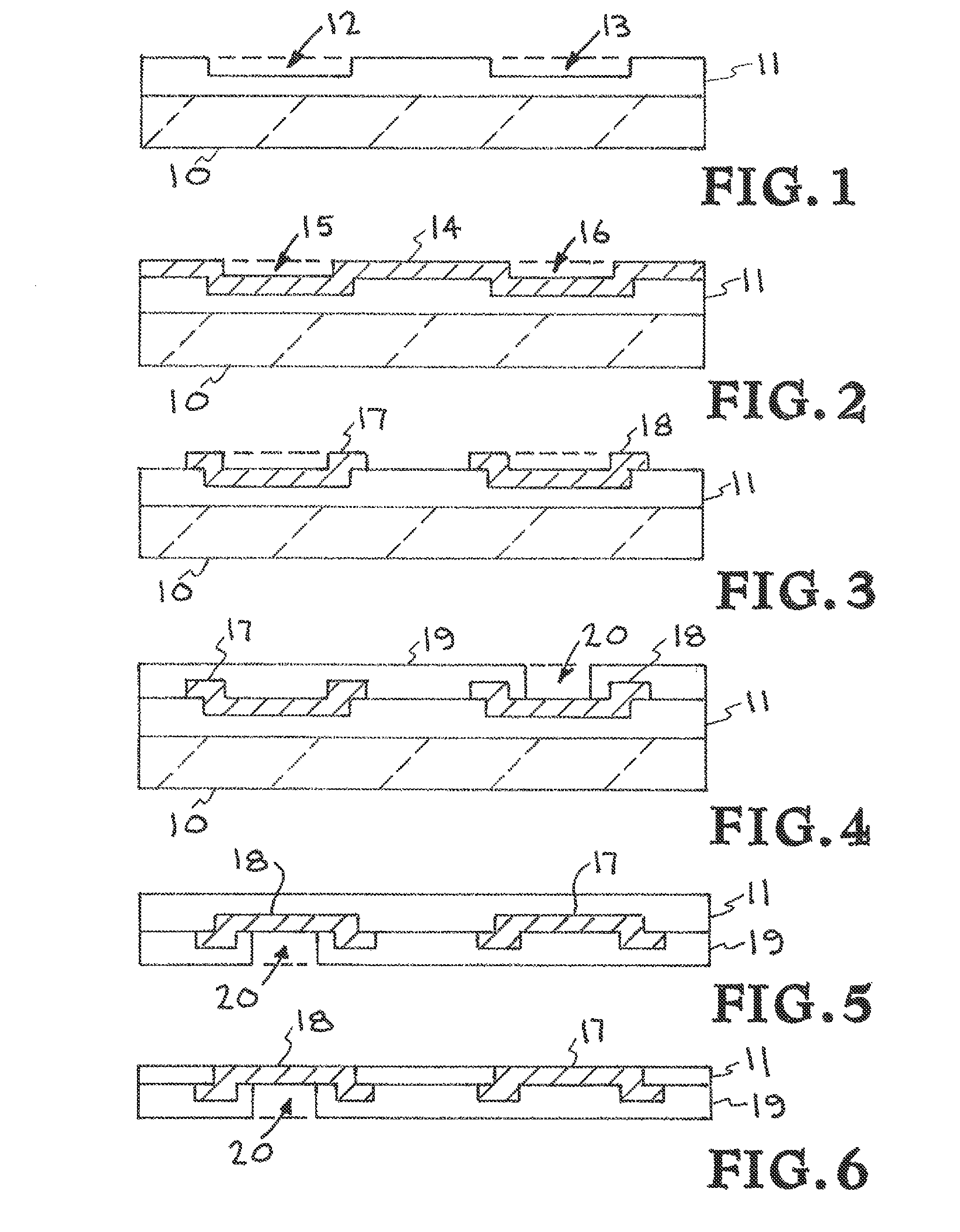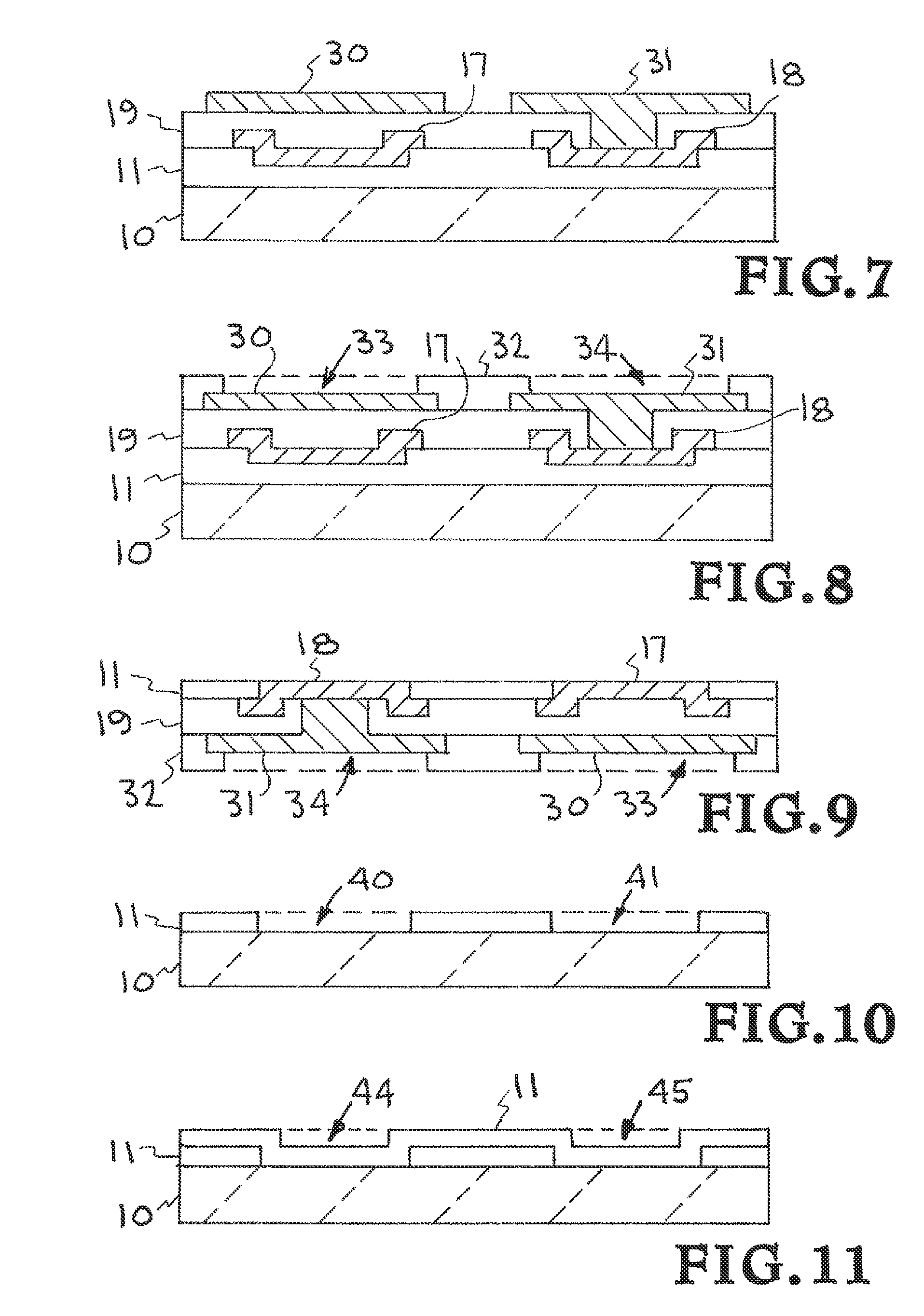Method of fabricating conductive electrodes on the front and backside of a thin film structure
a thin film structure and fabrication method technology, applied in the direction of printed circuit details, printed circuit aspects, printed circuit manufacturing, etc., can solve the problems of metalized structures cracking, metalized structures failing to produce open circuit devices,
- Summary
- Abstract
- Description
- Claims
- Application Information
AI Technical Summary
Benefits of technology
Problems solved by technology
Method used
Image
Examples
Embodiment Construction
[0018]Turning now to the drawings, FIGS. 1-6 together show a first example embodiment of a method of fabricating a thin film structure having conductive electrodes on the front and backsides. In particular, six progressive stages are shown for producing an example single-level thin film structure, i.e. a thin film structure having a single layer of defined metal structures embedded between dielectric layers. It is appreciated however that additional layers of defined metal structures may be formed to produce a multi-level thin film structure and device, described in detail below.
[0019]FIG. 1 shows a first thin-film dielectric layer 11 deposited on a substrate 10 which may be a silicon, metal, glass or ceramic substrate. For this and subsequent dielectric layers, it is appreciated that any desired dielectric layer material may be used, such as but not limited to parylene, polyimide, polyethylene, polyurethane, silicon, silicon dioxide, silicon nitride, silicon carbide, quartz, boro-s...
PUM
| Property | Measurement | Unit |
|---|---|---|
| thickness | aaaaa | aaaaa |
| angle | aaaaa | aaaaa |
| pressure | aaaaa | aaaaa |
Abstract
Description
Claims
Application Information
 Login to View More
Login to View More - R&D
- Intellectual Property
- Life Sciences
- Materials
- Tech Scout
- Unparalleled Data Quality
- Higher Quality Content
- 60% Fewer Hallucinations
Browse by: Latest US Patents, China's latest patents, Technical Efficacy Thesaurus, Application Domain, Technology Topic, Popular Technical Reports.
© 2025 PatSnap. All rights reserved.Legal|Privacy policy|Modern Slavery Act Transparency Statement|Sitemap|About US| Contact US: help@patsnap.com



